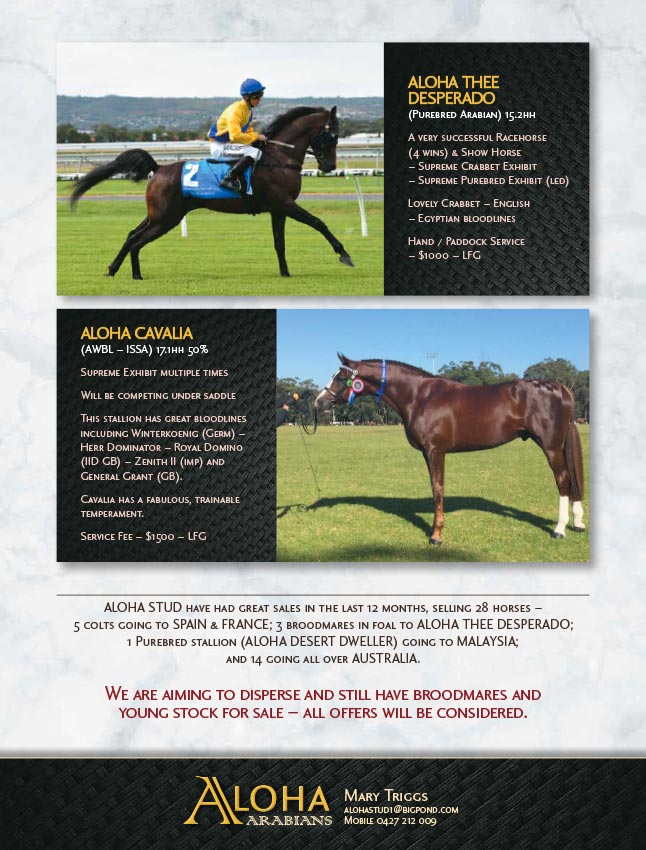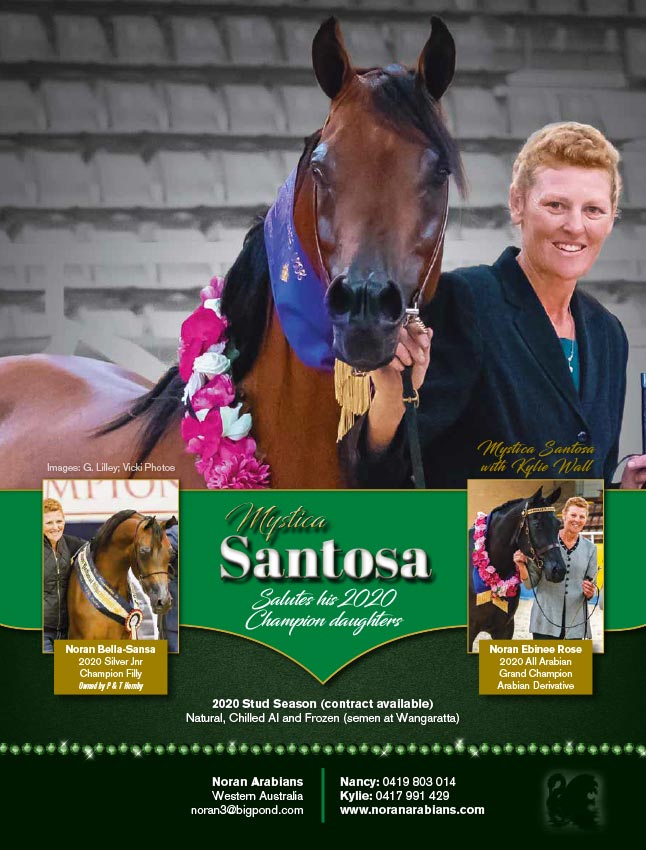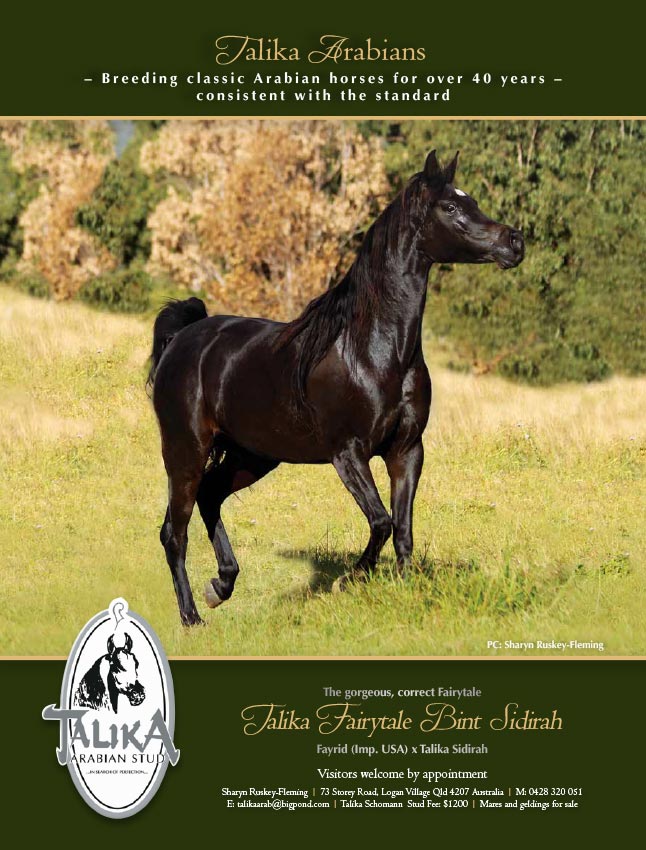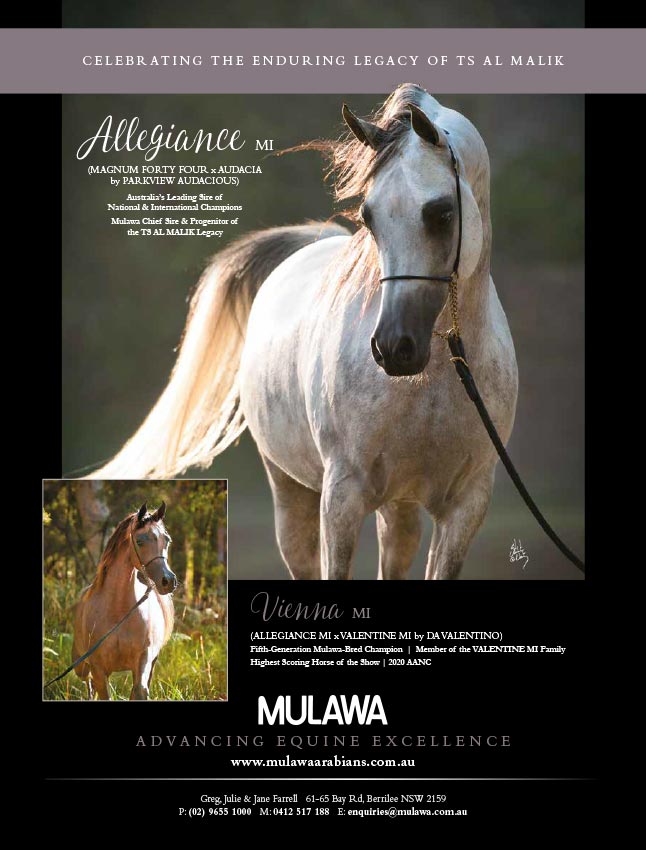
The Original Racehorse
July 3, 2017
Lavender Foal Syndrome
July 5, 2017Saddle Horse Tips
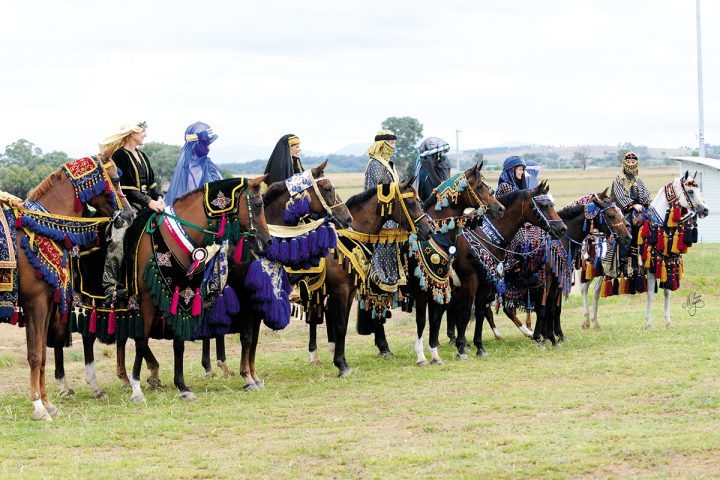
How to impress your saddle horse judge.
Saddle Horse Tips
Learn how to impress your saddle horse judge in the show ring with some practical tips from an Equestrian Australia Show Horse and Arabian Horse Society of Australia National Panel judge, Graham Smith.
Graham has over 35 years’ saddle horse judging experience at the highest levels in Australia and internationally. He offers some insights into what you might like to consider or improve on, in order to help impress your judge at your next show.
Be Prepared
Both horse and rider combinations need to be fit for the task at hand. Competing over a long, hot or cold day in many classes requires physical fitness for both horse and rider. If you are lucky enough to progress through classes and want to remain competitive for championship classes at the end of the day, make sure you have prepared yourself and your horse adequately. While you put time and effort into preparing your horse for days, weeks and months before a show, you should also be self-aware about your own fitness levels in order to achieve maximum performance.
Know The Rules
We all make mistakes occasionally or forget things – however riders really should take responsibility for having the correct gear for their horse and themselves. Don’t rely on your well-meaning parents, friends or the gate marshall and most importantly, don’t wait for the judge to tell you that you have incorrect gear!
Ensure you know the dress and gear rules for the class you are entering and take a copy of the relevant rule book with you to the show.
Additionally, we are lucky to have in Australia many different types of classes in which we can enter on any given day at a show. These classes can be many and varied from hack, western, stock horse and hunter etc. However, before entering the ring understand the paces and workout typically required for the class – think about what the judge will be looking for, well before entering the ring and ride your horse accordingly to suit the requirements of the class.
Arrive On Time
Always allow plenty of time to arrive in the marshalling yard well before your class is called in. As a courtesy, let the gate marshall know what class you have entered and identify yourself or your horse number. Being on time helps the show and allows your ring (and judge) to run on time throughout the day. You will also be more relaxed and so will your horse. Additionally, this extra time may allow you to watch the previous class and note the types of workouts being called for by the judge.
If you are not ready when the class has been called, that can be seen to be disrespectful to the judge and your fellow competitors. Obviously you also run the risk of not being allowed into the ring if the class has commenced. Under no circumstances delay your entrance into the ring to make a grand entrance – you may in fact make a negative impression on the judge and fellow competitors.
Presentation
Always have clean well fitted clothing and tack. You don’t need to have the latest designer label piece of bling or clothing but you should be clean, neat and tidy. Note the rule book requirements for the dress code for your class and if in doubt, err on the side of caution in regard to show ring apparel – don’t be a fashion leader!
Similarly in regard to tack – you don’t need squeaky new saddles and bridles with patent leather or shiny bling. Well-fitted gear that has been pre-loved and well cared for may serve you better.
The ‘look’ (or overall presentation) that you are trying to achieve in the ring comes from a mix of having a total package of horse and rider that are both well groomed, have correctly fitted tack and apparel, work together professionally and are both confident in their outlook and work.
Ring Craft
This comes with experience but common sense goes a long way as well.
Think about your horse’s best attributes and how you might like to display them during your time in the show ring. Ensure your horse is capable of the class you have entered in and your expectations are realistic. Always take note of the size of the arena, is it square, rectangular or slopes in one direction – think how you will best ride and present your horse in the arena space. Watch how the judge uses the arena for previous classes, how the judge uses the space and what types of workouts are set.
Whenever you enter the ring, do so with confidence and forward movement – try and stand out as soon as the judge sees you. Make sure your horse is thoroughly warmed up and going forward freely and in a balanced frame.
Don’t crowd the judge by riding in ever diminishing circles around them. Keep reasonably wide and let your horse have room to travel forward. Judges will always see a horse that is working well; you do not need to be on top of them. Don’t panic if you accidentally strike interference from another competitor’s horse. Judges understand this can happen in the ring and will, in most cases, be sympathetic to you and your horse, especially if you display professionalism in the way you better the situation.
You are on show, so be self confident in your outlook – smile, and try to maintain eye contact or awareness of what the judge is doing or asking for in regard to circle work.
The Call In And Workout
If you are lucky to be called in, remember your placing and bring your horse back through its paces in a safe manner so as not to interfere with horses still competing on the circle. Stand quietly but alert in the line-up to allow sufficient space between you and other horses for either the judge or steward to safely inspect or discuss the workout with you.
Listen carefully to the judge or steward when given the details of the workout. If you are not sure of any parts of the workout, politely ask the judge to either repeat it or clarify the part of the workout or type of movement you may not be sure of. Take note of the workout – watch other competitors to see how they ride the workout and how they use the arena space. Take this time to think about what the judge is looking for in the workout they have set – think about your horse’s strengths and how you can best display them during the workout.
During your workout it is your time to shine – take a deep breath, and try to relax as nerves will often cause a memory lapse or that nervousness can be passed onto the horse in a negative way. Be confident and ride your horse forward from the line-up.
The judge will, in most cases, prefer to see a horse that is ridden quietly and calmly in a forward manner, showing consistent rhythm and is happy and workman like, rather than one that is irregular in its paces and movements with the rider also being tentative or not consistent with the aids.
Always try to ride with straight lines and round, even circles throughout your workout, it really does make an impression with the judge if you can master these basics. Be aware of any space limitations in the arena and adjust your workout accordingly, at all times you want the workout to flow and be consistent.
Maintain your composure during the workout – even if little things go wrong. You are being judged on a range of elements from your initial circle work to individual workout, so don’t let one or two minor issues fluster you – it is the total package that the judge is assessing you on.
Finally, always come back to the judge and salute in a confident manner with a smile on your face and a pat for your horse, it is always a nice way to finish off a workout.
The Final Line-Up
Once you have finished your workout and are back in the line-up, you really should start to prepare yourself for any possible final inspection by the judge. The final inspection could be a cursory glance down the line-up. It could be an individual inspection of every horse or sometimes judges will ask for two very close horses to work together on a circle in order to determine the final places. The bottom line is that you need to be mentally prepared for all circumstances.
While you are waiting in the line-up, be respectful of the judge and other competitors who are still competing by not talking out aloud – you are still being judged so don’t lose concentration now. Be warned – judges have good hearing and eyes in the backs of their heads!
Allow sufficient room for the judge to walk around and inspect your horse if required. Stand your horse up squarely and be prepared for the judge to inspect your horse immediately after the last horse has worked out.
Whatever the result in the class, congratulate the other competitors and thank the judge.
Safety And Common Sense
All of those involved in the horse industry are aware of the increased emphasis in regard to personal safety and insurance obligations while competing in horse-related events.
Spare a thought for the judge on the day at your show whom constantly conducts mental risk assessments on every horse and rider in every class. By that I mean a judge needs to quickly and critically analyse that both horse and rider have the correct gear, and riding apparel for the class, not only from a rule perspective but also from a safety perspective. They have limited time to ensure that gear is correctly fitted, safe and fit for purpose.
Most importantly, a judge needs to assess the welfare of a horse – is it unduly stressed by human or other factors (i.e heat), is the horse exhibiting signs of unevenness or discomfort. During circle work or individual workouts is the horse a risk to its rider or other competitors. Is the rider or handler treating the horse in a humane way. Can riders be excused from riding in jackets in hot weather etc. The list goes on.
A judge has a myriad of obligations imposed on them during the course of judging a class. They need to conduct the class and judge it according to the ‘rules’ of that event but also have overarching obligations relating to safety and welfare of competitors and horses.
Safety is a shared responsibility at a horse show. Assist the judge by being mindful of your obligations to ensure your own safety, that of your horse and the competitors and spectators around you. Judges have your interests at heart in every class they judge – help them by being safety aware.








